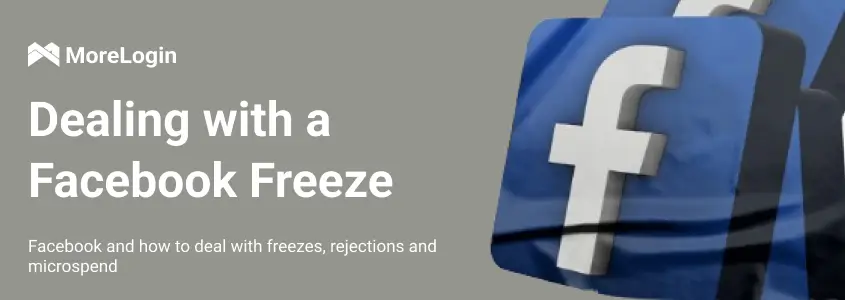
- Product

- Pricing
- Affiliate Program
- Use Cases
- Resource


When launching traffic arbitrage on Facebook, it's essential to choose the right type of ad account. This choice impacts not only how scalable your campaigns are, but also how resilient they are to freezes, rejections, and microspend issues. In this article, we’ll break down which accounts are best for launching traffic, the difference between rental and agency accounts, how to properly test funnels, and how to deal with delivery problems.
Rental Accounts
These are real user ad accounts rented out on a postpaid model. They're pre-warmed and often come with high daily spend limits (up to $500 or more), allowing you to launch campaigns immediately without gradual trust-building like you would with farmed accounts.
Advantages:
High spend limits right out of the box
Pre-linked payment card provided by the service
Billing can be split after testing
Great for testing A/B funnels and hypotheses
However, using rental accounts requires caution. You can’t change the payment card, access billing settings, or switch fan pages without approval from the provider. You should also follow recommended launch timing—typically between 11:00 AM and 1:00 PM local GEO time. Any abrupt action can lead to a freeze or ban. Therefore, rentals are best viewed as a tool for testing, not long-term scaling.
Agency Accounts
These operate on a prepaid model: the provider receives a credit line from Meta, and you deposit funds in advance, which are used for ad spend. Unlike rental accounts, you can’t split billing here, but you gain much more stability. These accounts are rarely banned or frozen, enjoy high moderation approval rates, are suitable for scaling profitable funnels, and are marked as verified advertisers—boosting system trust.
A classic setup looks like this:
First, test funnels using a rental account.
If results are positive, move to an agency account to scale.
A funnel is considered "working" if it maintains stable CPI or CPA for 3–4 days, continues to perform when the daily spend increases, and consistently passes moderation without rejections. Even if it's breaking even, it may still be promising if there's potential for optimization.
Your GEO choice depends heavily on your budget. Here's a quick guide:
Tier-1 (USA, Canada, Germany): Expensive. Not ideal for small budgets. High competition, expensive clicks and installs—but high-quality, paying traffic.
Tier-2 (Latin America, Eastern Europe): Great for testing. Large reach, affordable CPCs. Often where you’ll quickly find working funnels and optimize without burning cash.
Tier-3 (Asia, Africa): Very cheap, but low-quality traffic. Good for testing volumes or minimal-cost trials, but monetization is usually weaker.
💡 Best starting point for beginners: LATAM or Indonesia — low cost per install, large audience, and low competition. With smart segmentation, strong creatives, and precise targeting, you can build profitable funnels even on saturated offers.
Meta scans ad creatives using digital fingerprints. Even a clean-looking video can be instantly rejected if its code matches a previously banned asset. To avoid rejections, you need to change the digital signature of your creatives using AI tools, Telegram bots, or content generators.
Effective tricks include:
Adding extra frames
Changing video duration and structure
Using unique thumbnail images instead of pulling directly from the video
Also, technical fingerprinting matters:
Use anti-detect browsers like MoreLogin to avoid bans due to environment or system fingerprint duplication.
A "freeze" means the campaign isn’t spending at all, or it's stuck at microspending levels. Causes vary, but here are some quick fixes:
Re-adding or updating the payment card (especially for rentals)
Changing the fan page (this sometimes instantly revives spend)
Launching campaigns between 11:00 AM and 1:00 PM local GEO time (this window tends to get more delivery traction)
Using accounts with GEOs close to your target region (increases trust and delivery success)
Always keep 3–5 rental accounts in reserve so bans or freezes don’t halt operations.
Continuously test different approaches—from native-style creatives to bolder, more aggressive content.
On agency accounts, always use retargeting—it often yields a higher ROI than cold traffic.
Most importantly: don’t rely on one method. Facebook’s algorithm changes constantly, and adaptability is key.
Best strategy: rental → agency system.
Use rental accounts for fast, low-risk testing.
Scale winning campaigns using agency accounts for maximum stability.
In today’s volatile advertising landscape and with Meta's frequent updates, flexibility, automation, and creative uniqueness are the keys to success. The winners aren’t just those with big budgets—it’s those with strong systems and efficient processes.